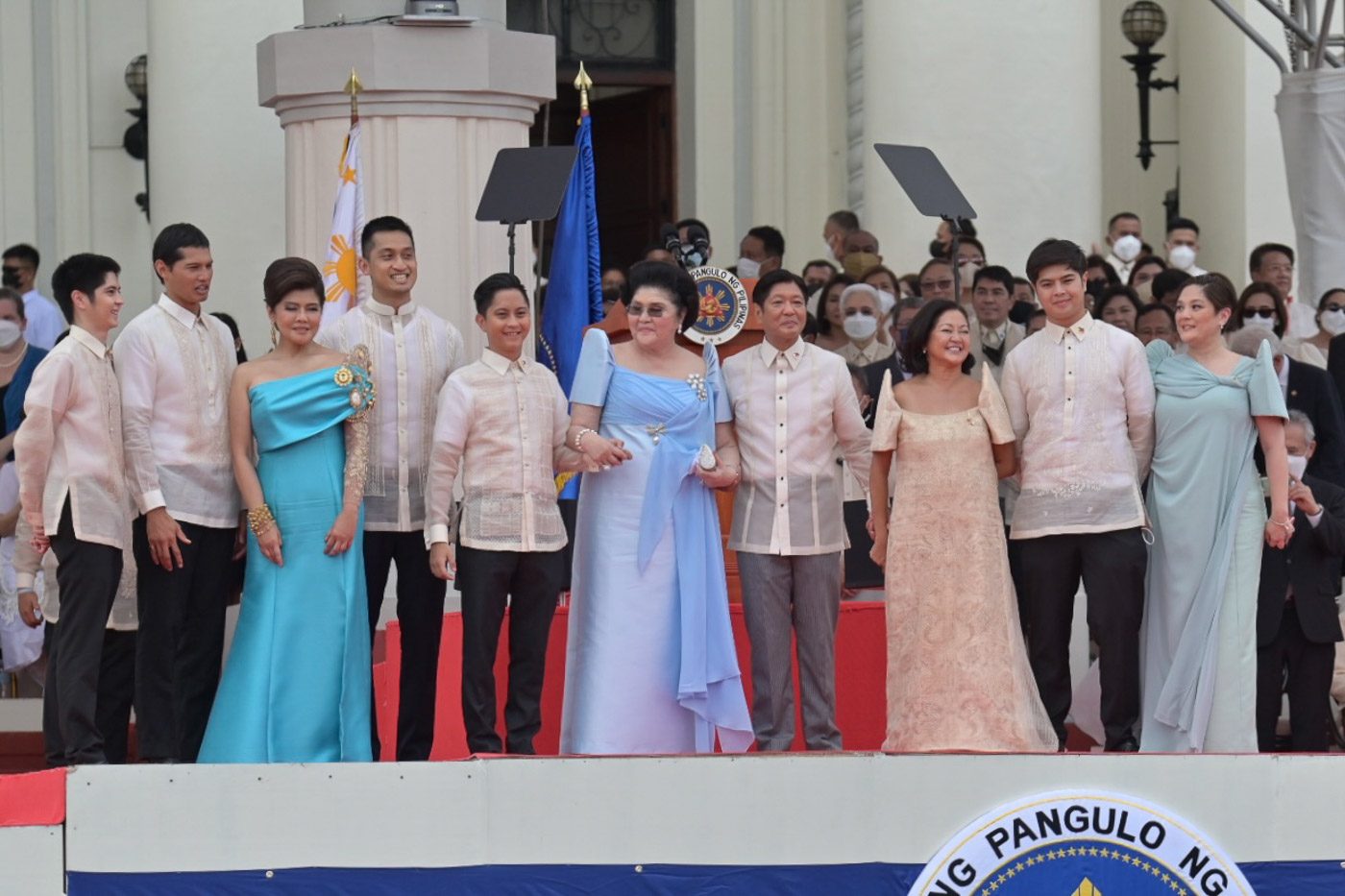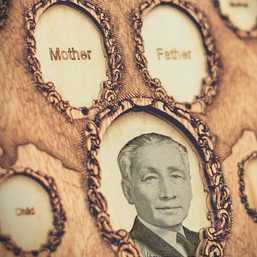SUMMARY
This is AI generated summarization, which may have errors. For context, always refer to the full article.


MANILA, Philippines – Ferdinand “Bongbong” Marcos Jr. took his oath as the 17th Philippine president at noon on Thursday, June 30, fulfilling the dream of his mother Imelda for her son to one day reclaim the seat in Malacañang.
He’s coming home to Malacañang, said celebrity Toni Gonzaga during one of the biggest rallies of the Uniteam held in Cebu City before election day. Gonzaga, who resigned as top host of ABS-CBN following criticisms of her support for Marcos, sang the national anthem on Thursday.
It was Chief Justice Alexander Gesmundo who administered the oath of Marcos, a full circle too for him who spent three years from 1998 to 2001 as commissioner of the Presidential Commission on Good Government (PCGG) tasked in recovering the stolen wealth of the dictator Marcos’ family and their cronies.

Marcos wore a barong designed by Pepito Albert, a modern take on the rayadillo which was a traditional military uniform in the Spanish era.
It’s the day the family has long waited for, according to Senator Imee Marcos who said they are “very, very grateful for a second chance” after their family went through what she said was a “tough time.” She was referring to the People Power revolution that ousted their father in 1986 after discontent with the corruption and abuses of the 21-year dictatorship.
After coming back to the Philippines from exile, Imelda immediately ran for president in the 1992 elections. But Imelda withdrew from the race that saw Fidel V. Ramos win the presidency. Marcos the son meanwhile reclaimed his seat as governor of Ilocos Norte. In 1995, he ran for the Senate but lost. He went back to Ilocos Norte as governor, and began the long-carved path to ascend to the throne, maximizing his congressional terms, then clinching a Senate seat in 2010.
The 2016 loss for the vice presidency was “a very painful experience for him,” Liza Marcos told entertainment host Boy Abunda. “He was like wow what happened, you see this ground swell and [then] you lost,” said Liza, who added she was nervous about the 2022 run.
But Marcos was a runaway survey leader throughout the campaign, finishing strong and becoming the first majority president of the Philippines.
Since winning, Marcos’ diplomatic actuations has seen him treat international orders and human rights differently from his predecessor that Rodrigo Duterte. He has appointed himself Agriculture Secretary to oversee the country’s response to food production problems in the middle of the pandemic-induced economic crisis.
He, however, has flip-flopped on a promise to suspend excise tax on oil to respond to rising fuel prices, and instead said he would streamline aid to the most affected sectors.
The National Museum is a historic venue for the Marcoses.
The main building, the National Museum of Fine Arts, is where the late dictator Ferdinand E. Marcos and the former Imelda Romualdez, first met. Back in 1954, the structure was still the Legislative building which housed the Philippine Congress, when the two got acquainted during a congressional hearing.
In 1969 after the elder Marcos won a second presidential term, the National Museum was among the venue that protesters swarmed to oppose his leadership, marking the start of the First Quarter Storm or a period of civil unrest in the country.
The National Museum is also custodian for some paintings seized from the Marcoses by the government in the implementation of the 2003 Supreme Court decision that declared $658 million of their assets stolen wealth. – Rappler.com
Add a comment
How does this make you feel?



![[EDITORIAL] Marcos, bakit mo kasama ang buong barangay sa Davos?](https://www.rappler.com/tachyon/2023/01/animated-marcos-davos-world-economic-forum-carousel.jpg?resize=257%2C257&crop_strategy=attention)

There are no comments yet. Add your comment to start the conversation.